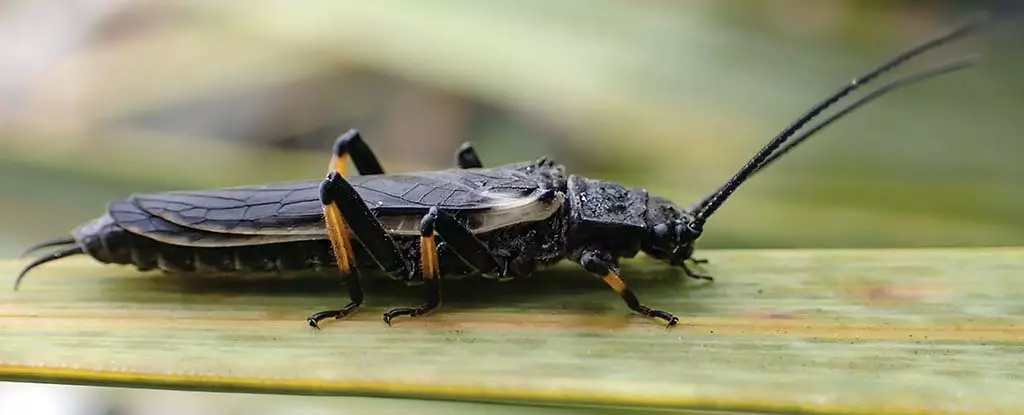The natural world is an intricate tapestry of evolutionary relationships, where organisms often rely on adaptations for survival. The long-tailed stonefly, scientifically known as Zelandoperla, provides a captivating illustration of how species can undergo rapid evolution in response to environmental changes, particularly due to human activity. This native New Zealand insect has recently exhibited notable shifts in coloration, a phenomenon resulting from deforestation and the resultant scarcity of its toxic counterpart, the Austroperla stonefly. This article examines the implications of these findings, shedding light on the resilience and adaptability of nature in the face of human-induced environmental stress.
In its natural habitat, Zelandoperla has historically used mimicry as a survival tactic. By resembling Austroperla, a stonefly renowned for its cyanide production and risk of being preyed upon by birds, Zelandoperla could effectively deter potential predators. This striking case of evolutionary mimicry highlights not just the ingenuity of the insect but also the biochemical pathways that enable such adaptive traits. Zelandoperla’s visual deception allowed it to thrive in forested areas where Austroperla was prevalent, ensuring both insects shared a defensive matrix against their avian attackers.
As European settlers swept through New Zealand, widespread deforestation took hold, leading to a considerable loss of habitat. This ecological upheaval radically impacted the population of Austroperla, as the very conditions that supported its existence—the dense forest ecosystems—vanished. With the decline of Austroperla, Zelandoperla found itself without its iconic counterpart to mimic. Research from the University of Otago reveals that under these altered circumstances, Zelandoperla began to shed its mimicry, allowing for the emergence of new coloration patterns, including a striking ebony hue.
This is a pivotal moment that illustrates the dynamic nature of evolutionary change; Zelandoperla’s choice to abandon a previously successful survival strategy signifies an adaptive response to a dramatically shifted landscape. The absence of Austroperla has led to less predation pressure in deforested areas, allowing Zelandoperla to explore alternate survival strategies.
To document this crucial evolutionary transition, scientists employed a combination of field studies, experimental predation assessments, and genetic mapping to understand the interplay between environmental change and insect response. Their findings indicated that in areas stripped of forest, not only was there a decline in overall predation rates, but predators showed a strong preference for the darker-colored Zelandoperla over lighter variants. This suggests that even within the shifting ecology, these insects could still retain a degree of protection from predation, albeit in a different guile.
Researchers noted that Zelandoperla populations exhibited up to a three-fold shift away from their original coloration in tandem with the decline of Austroperla populations. This correlation underscores the complex relationships within ecosystems and the cascading effects that result from significant anthropogenic changes, like deforestation.
The study of Zelandoperla serves as a compelling reminder of nature’s capacity for adjustment. Despite the significant challenges posed by human action, certain species display remarkable resilience and an ability to adapt through evolutionary processes. These findings not only illuminate the ongoing consequences of deforestation in New Zealand but also suggest that evolutionary adaptations can occur over surprisingly short periods.
Moreover, the insights drawn from the long-tailed stonefly exemplify a broader narrative regarding how species can navigate the disruptions caused by human activities. While the loss of biodiversity and habitat destruction remain pressing concerns, the ability of Zelandoperla to evolve highlights the unpredictable yet equalizing force of evolution amidst adversity. As scientific exploration continues, it reveals the intricate relationships that bind organisms to their environments and illustrates the ongoing journey of life in adapting to changing realities.


Leave a Reply